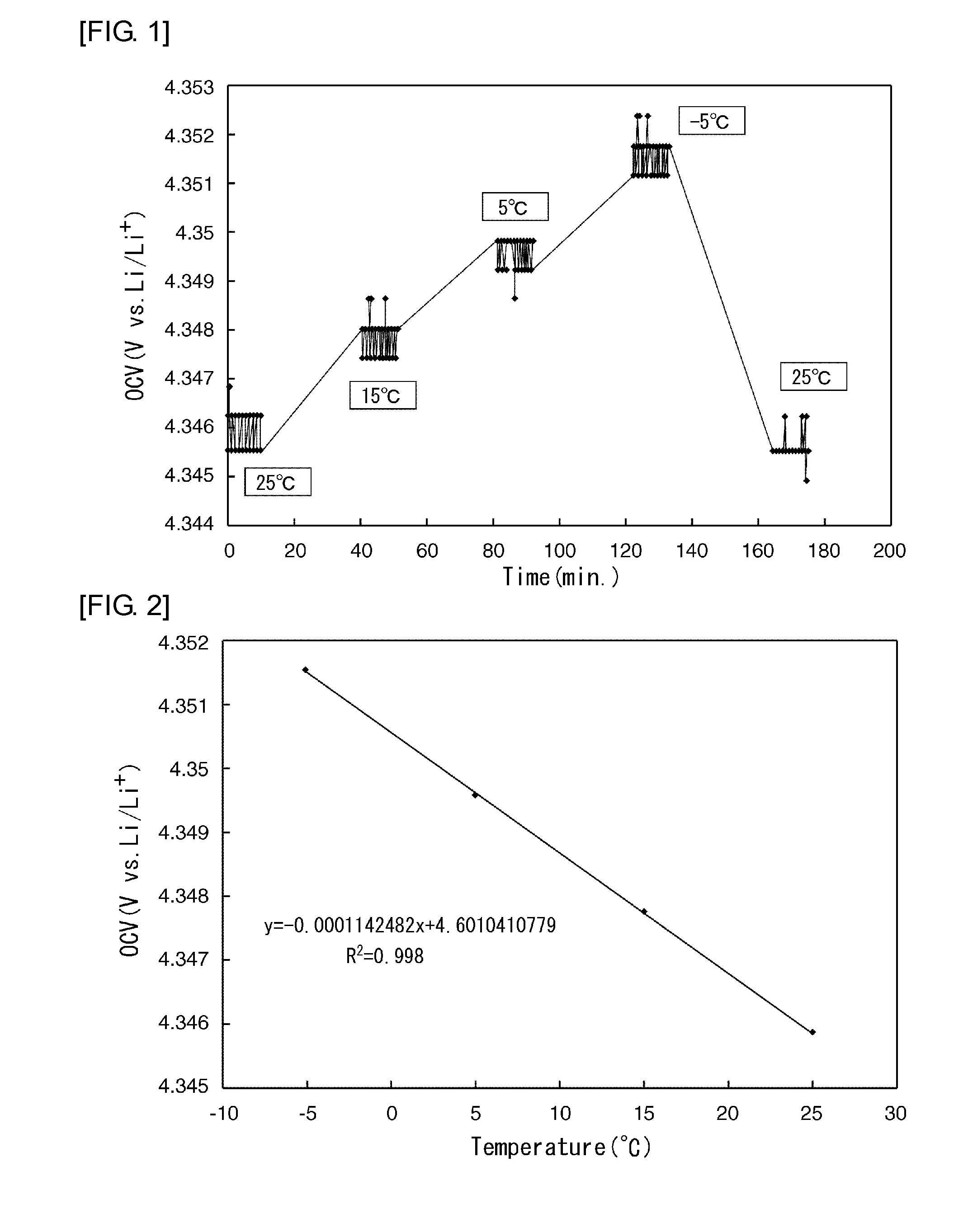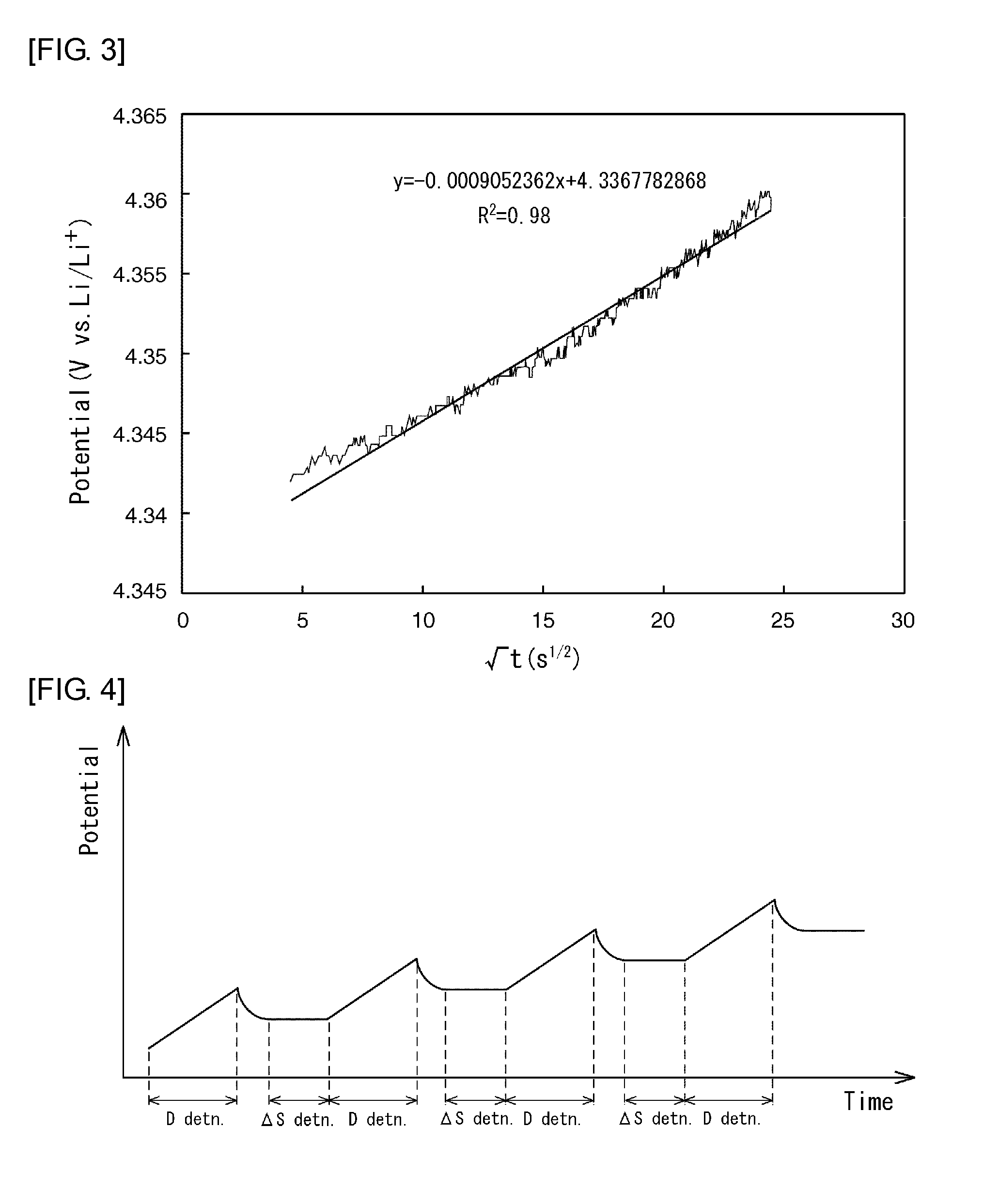Method for evaluating secondary battery
- Summary
- Abstract
- Description
- Claims
- Application Information
AI Technical Summary
Benefits of technology
Problems solved by technology
Method used
Image
Examples
example 1
Production of Test Cell
[0044]Mixed together were 95 parts by weight of lithium cobaltate serving as a positive-electrode active material, 2.5 parts by weight of carbon serving as an electronic conductor and 2.5 parts by weight of poly(vinylidene fluoride) serving as a binder. Thereafter, N-methyl-2-pyrrolidone was added to the resultant mixture, thereby preparing a slurry for forming a positive electrode mixture layer. The slurry was applied to one side of a current collector made of an aluminum foil, dried, rolled and then cut into a plate with 5.7 cm×2.5 cm. Finally, a positive electrode tab was attached to the plate, thereby producing a positive electrode (working electrode).
[0045]A counter electrode and a reference electrode were each composed of a lithium metal plate.
[0046]A nonaqueous electrolyte was used in which lithium hexafluorophosphate was dissolved as an electrolyte salt in a nonaqueous solvent made of a mixture of ethylene carbonate and ethyl methyl carbonate mixed in ...
example 2
[0077]A test cell was produced and evaluated in the same manner as in Example 1 except that LiNi1 / 3Co1 / 3Mn1 / 3O2 was used as a positive-electrode active material.
[0078]In this case, the powder density of LiNi1 / 3Co1 / 3Mn1 / 3O2 was 2.42 g / cm3, and the specific surface area thereof calculated by the BET method was 0.31 m2 / g.
[0079]FIG. 7 shows graphs representing entropy variation and chemical diffusion coefficient against amount of lithium in the positive-electrode active material in this example.
[0080]Referring to the results shown in FIG. 7, the entropy variation increased with increasing amount of lithium eliminated until the amount of lithium eliminated reached approximately 0.3. When the amount of lithium eliminated exceeded approximately 0.3, the entropy variation decreased with increasing amount of lithium eliminated. When the amount of lithium eliminated reached and exceeded approximately 0.7, the entropy variation increased again with increasing amount of lithium eliminated. It c...
PUM
 Login to View More
Login to View More Abstract
Description
Claims
Application Information
 Login to View More
Login to View More - R&D
- Intellectual Property
- Life Sciences
- Materials
- Tech Scout
- Unparalleled Data Quality
- Higher Quality Content
- 60% Fewer Hallucinations
Browse by: Latest US Patents, China's latest patents, Technical Efficacy Thesaurus, Application Domain, Technology Topic, Popular Technical Reports.
© 2025 PatSnap. All rights reserved.Legal|Privacy policy|Modern Slavery Act Transparency Statement|Sitemap|About US| Contact US: help@patsnap.com



